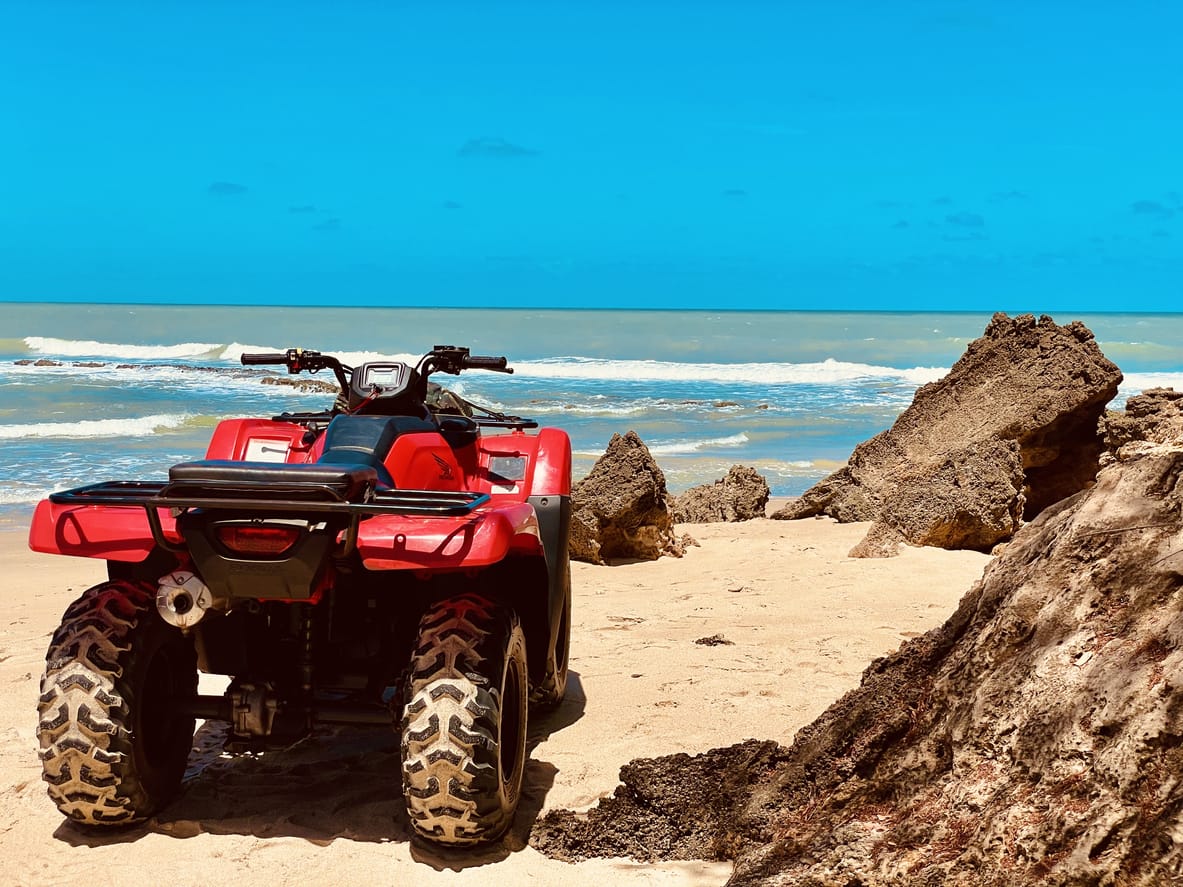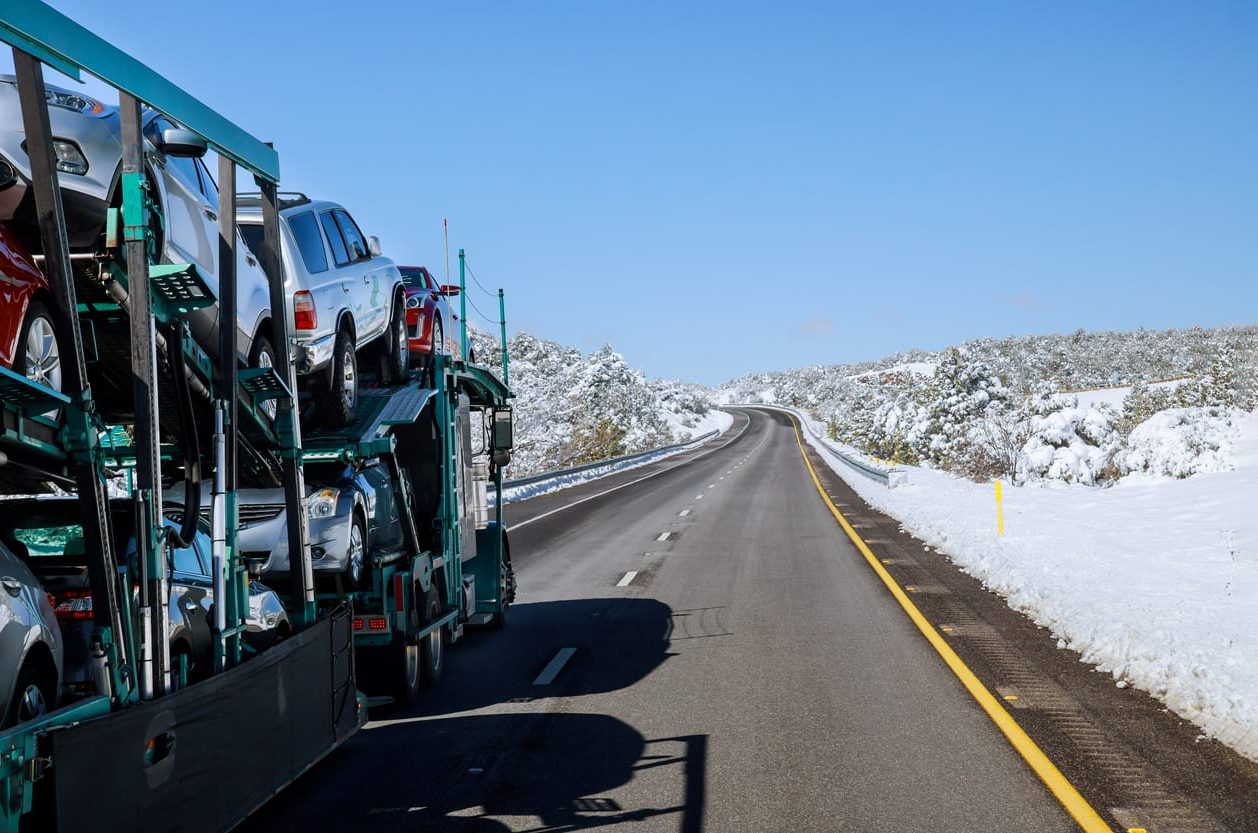Have you been dreaming of taking your ATVs/UTVs and others on a cross-country road trip, but the thought of driving it all the way there seems overwhelming? Ship A Car, Inc. can help you get your vehicle to its destination safely and efficiently, without the stress of a long road trip.
According to a recent study, nearly 50% of ATV and UTV accidents occur during transportation to and from riding locations. This highlights the importance of proper shipping practices and choosing a reputable shipping company.
Many riders and ATV/ UTV owners believe that open trailer shipping is the only affordable option for shipping their recreational vehicles. However, there are many affordable enclosed trailer options available that offer better protection and security for your vehicle during transport.
First, you’ll need to measure your vehicle to determine its weight and dimensions, which will help determine the shipping cost. Ship A Car offers a variety of shipping services, including open and enclosed trailers, flatbed or towable shipping, and container or air freight shipping. Each has its advantages and disadvantages; you can choose the one that works best for you.
Before shipping, you’ll need to prepare your vehicle by removing any personal items and cleaning them thoroughly. Take photos of your vehicle to document its condition before shipping. When the shipping company arrives, communicate any specific instructions or concerns you have with the driver. When your vehicle arrives at its destination, carefully inspect it to ensure there was no damage during transport.
Choosing the right shipping company is crucial. With the SAC team, you can be confident in a smooth and safe shipping experience. Our team of experienced professionals will help you navigate the shipping process and get your ATVs/UTVs to their destination on time and in good condition.
With the help of a comprehensive guide like “A Guide to Shipping Recreational Vehicles: ATVs, UTVs, and More,” riders can navigate the shipping process with confidence and ease, allowing them to focus on the excitement of their next off-road adventure. So go ahead, and plan that cross-country road trip – Shipacarinc.com has got you covered.
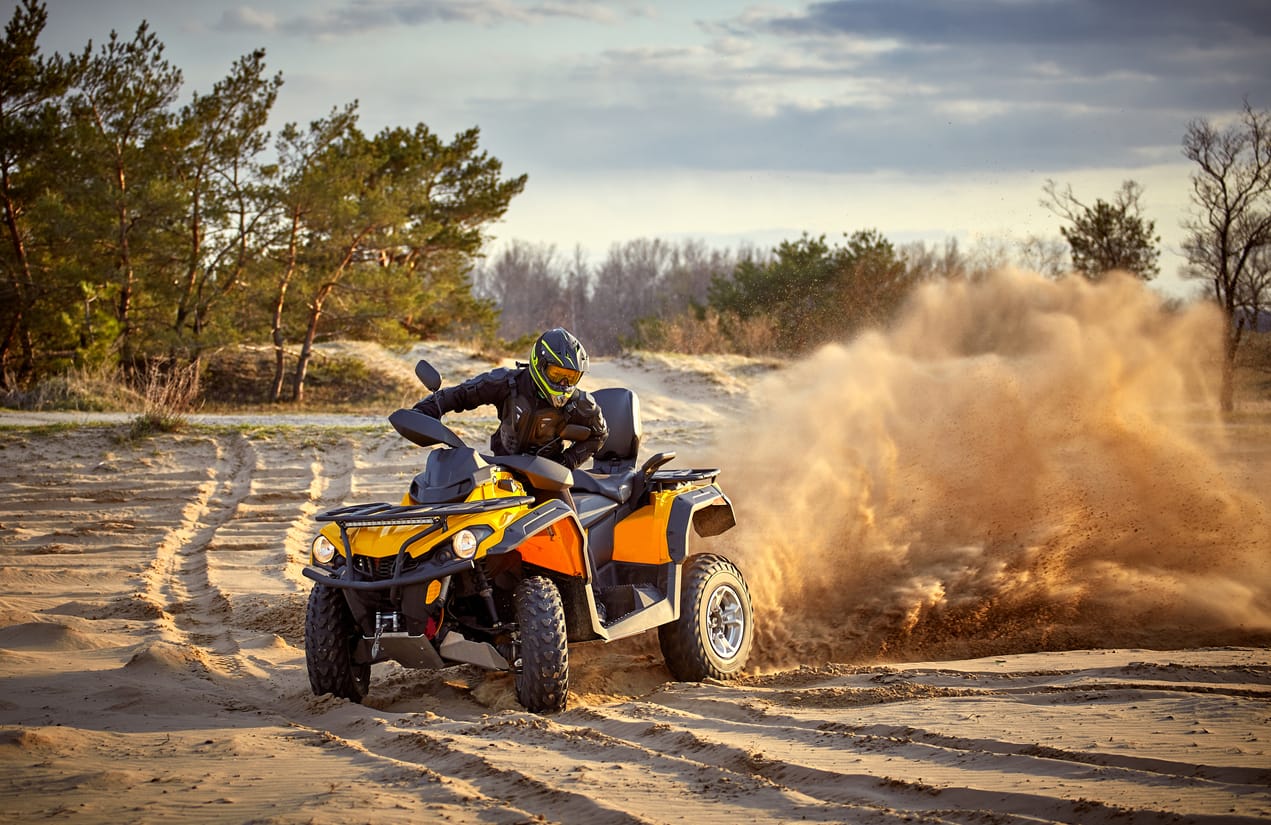
All-Terrain Vehicles (ATVs) and Utility Terrain Vehicles (UTVs) are off-road vehicles that are designed for rugged terrains and adventurous activities.
ATVs, also known as quads, are typically smaller and designed for one or two riders. They are known for their agility, speed, and manoeuvrability. ATVs are used for recreational activities such as trail riding, racing, hunting, and camping. They are also used for agricultural and industrial purposes, such as ploughing snow or carrying cargo on a farm.
UTVs, on the other hand, are larger and designed for both works and play. They have greater carrying capacities, more seats, and cargo space. UTVs are commonly used for transportation on job sites, such as construction or landscaping, and recreational activities such as off-road racing, hunting, and camping. They are also popular for recreational activities that require carrying equipment, such as fishing and camping.
Both ATVs and UTVs are versatile vehicles that can be customized with various features and accessories to enhance their performance and functionality. These features may include four-wheel drive, automatic transmissions, independent suspension systems, and adjustable suspensions. Accessories can range from winches, lights, and audio systems to snow ploughs, cargo racks, and gun racks.
Recreational Vehicles (RVs) have become increasingly popular for travel and outdoor adventures, and shipping them safely and securely has become a necessity for many. Whether it’s an ATV, UTV, or any other type of RV, the process of shipping these vehicles can be complex and requires careful consideration.
RVs are vehicles designed for recreational activities, such as camping, road trips, and off-road adventures. They come in various sizes and shapes, ranging from small pop-up trailers to large motorhomes. Shipping RVs can be necessary for various reasons, such as relocation, selling, or purchasing a vehicle from another state or country.
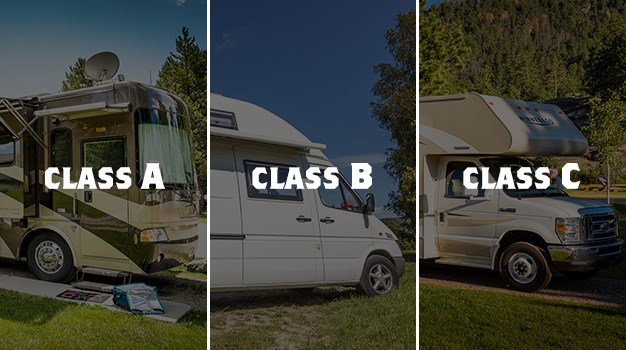
Recreational Vehicles come in many shapes and sizes, and it’s essential to understand the different types to choose the right shipping method. Let’s take a closer look at some of the most popular types of RVs, along with their features and accessories:
Overview of Different RVs: RVs are divided into two main categories: motorized and towable.
- Motorized RVs include Class A, B, and C motorhomes, which are self-contained and have their engines.
- Towable RVs, on the other hand, require a separate vehicle to tow them, and they include travel trailers, fifth wheels, and pop-up campers.
Here are some of the most popular ATVs and UTVs
- Polaris RZR – The Polaris RZR is a UTV that has been popular since it was first introduced in 2007. It is known for its powerful engine, high-performance suspension, and advanced technology.
- Yamaha Grizzly – The Yamaha Grizzly is an ATV that has been around for over 20 years. It is known for its durability and reliability, and it is a popular choice for those who enjoy off-roading.
- Honda Pioneer – The Honda Pioneer is a UTV that is designed for both works and play. It is known for its comfortable ride, advanced technology, and versatility.
- Can-Am Outlander – The Can-Am Outlander is an ATV that is known for its power and performance. It is designed for those who want to take on the toughest terrain.
- Kawasaki Teryx – The Kawasaki Teryx is a UTV that is known for its durability and reliability. It is designed for those who want to take on any terrain, and it is a popular choice for those who enjoy off-roading.
- Arctic Cat Wildcat – The Arctic Cat Wildcat is a UTV that is known for its performance and versatility. It is designed for those who want to take on any terrain, and it is a popular choice for those who enjoy off-roading.
- Yamaha YFZ450R – The Yamaha YFZ450R is an ATV that is designed for racing. It is known for its speed and agility, and it is a popular choice for those who want to compete in off-road races.
- Polaris Sportsman – The Polaris Sportsman is an ATV that is designed for both work and play. It is known for its versatility and durability, and it is a popular choice for those who enjoy off-roading.
- Can-Am Maverick – The Can-Am Maverick is a UTV that is known for its power and performance. It is designed for those who want to take on the toughest terrain, and it is a popular choice for those who enjoy off-roading.
- Yamaha Wolverine – The Yamaha Wolverine is a UTV that is designed for both works and play. It is known for its comfortable ride, advanced technology, and versatility.
Features and Accessories of ATVs:
- ATVs are designed for off-road adventures.
- Features may include: a. Four-wheel drive. b. Automatic transmissions. c. Independent suspension systems.
- Accessories can range from a. Winches. b. Lights. c. Audio systems. d. Snow ploughs. e. Cargo racks. f. Hunting gear.
Features and Accessories of UTVs:
- UTVs are designed for work and recreation.
- They have more significant carrying capacities, additional seating, and cargo space.
- Features may include a. Adjustable suspensions. b. Electronic power steering. c. Locking differentials.
- Accessories can range from a. Roof and windshield options. b. Gun racks. c. Toolboxes. d. Other options.
Differences between ATVs and UTVs:
- ATVs are generally smaller and designed for one or two riders.
- They are focused on off-road performance.
- UTVs are larger and designed for work and recreation.
- They can seat more passengers.
- UTVs also tend to have more accessories and options than ATVs.
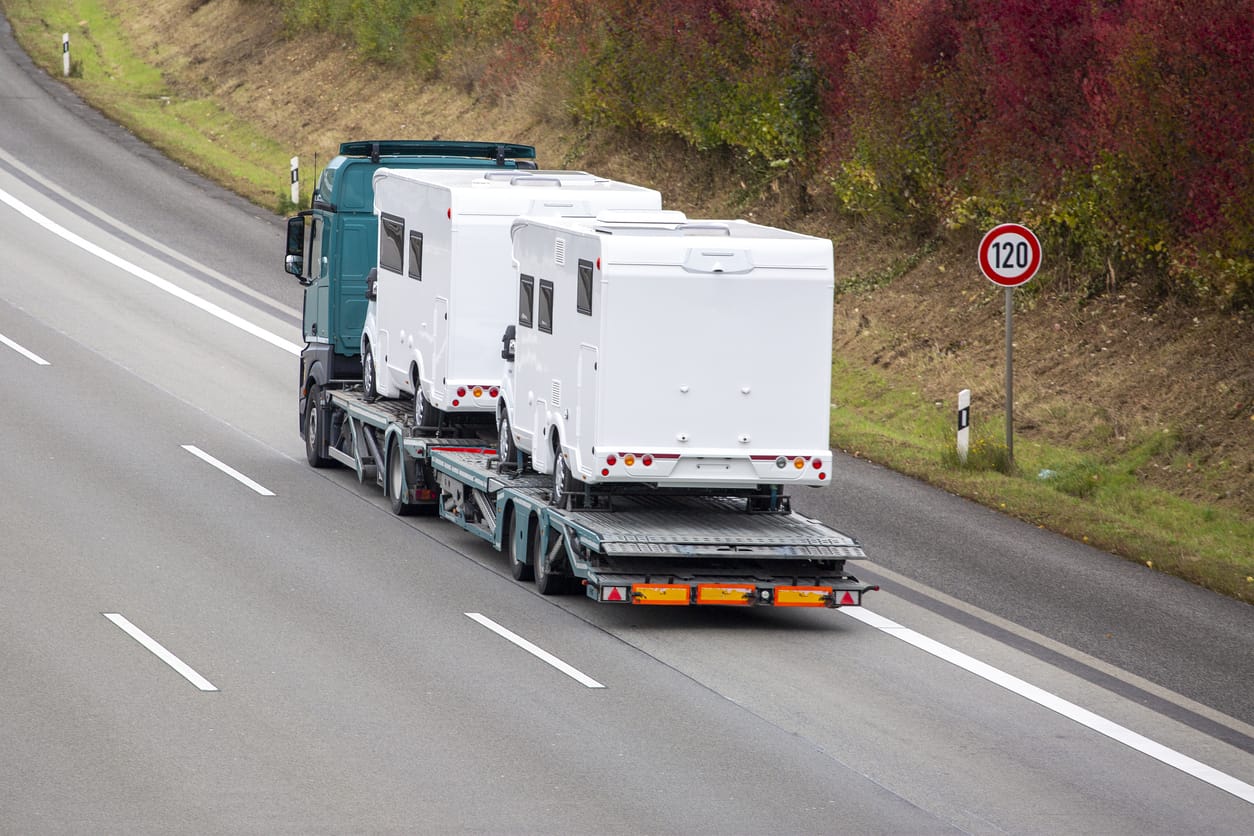
- Dimensions and Weight of the Vehicle: The size and weight of your RV will determine the type of transport trailer that is needed for shipping. It is essential to accurately measure and weigh your RV to ensure that it is properly accommodated during transport.
- Distance and Destination: The distance and destination of your RV’s shipping route will determine the shipping cost and time frame. It is essential to plan your shipping route and ensure that the shipping company can accommodate your destination.
- Timeframe and Delivery Options: Depending on your needs, you may require a specific timeframe for delivery, such as expedited shipping or guaranteed delivery dates. Additionally, consider the different delivery options available, such as door-to-door, terminal-to-terminal, or a combination of both.
- Insurance and Liability: Ensure that the shipping company offers insurance coverage and understands the liability policy. Accidents can happen, and it is essential to be adequately protected in case of any damage or loss during transport. You should also consider obtaining additional insurance for the transport process and/or add the vehicle to your personal auto insurance policy.
- Regulations and Permits: Different states have varying regulations and permits regarding the transportation of RVs. It is essential to research and understands these regulations to ensure compliance during transport.
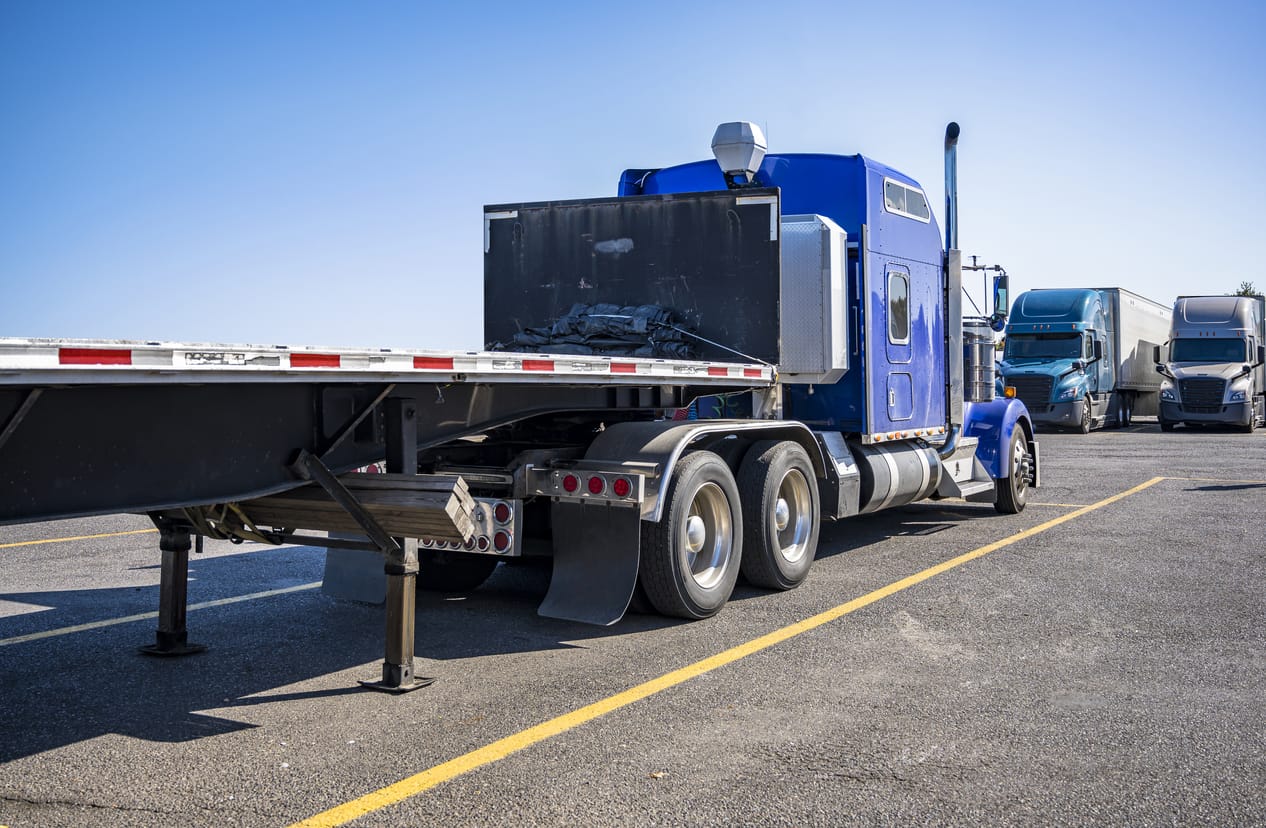
- Open and Enclosed Trailer Shipping: Open trailers are the most common type of shipping service for RVs. They are affordable, and RVs are loaded onto the trailer and secured using straps and chains. However, the RV is exposed to the elements and road debris during transport. Enclosed trailers are more expensive but provide better protection for the RV.
- Flatbed and Towable Shipping: Flatbed shipping involves loading the RV onto a flatbed trailer, which can be useful for larger or heavier RVs that can’t fit onto an enclosed or open trailer. Towable shipping involves using a specialized tow truck to pull the RV to the destination.
- Container Shipping: Container shipping involves loading the RV into a container for transport. This option is more expensive, but it provides the highest level of security for the RV.
- Air Freight Shipping: Air freight is the fastest and most secure option for RV shipping, but it is also the most expensive. This option is suitable for those who need their RV transported quickly and for shorter distances.
It’s essential to consider the size, weight, and distance of your RV’s transportation needs when choosing a shipping service.

- Researching Shipping Companies: Do your research and identify several shipping companies that specialize in RV transportation. Check their websites, read reviews, and compare their services.
- Evaluating Quotes and Comparing Prices: Request quotes from different shipping companies and compare their prices. Keep in mind that the cheapest option may not always be the best choice.
- Verifying Credentials and Reviews: Check the shipping company’s credentials, such as their license and insurance. Look for reviews from previous customers to see their experiences with the company.
- Communicating with the Shipping Company: Before making a final decision, communicate with the shipping company and ask any questions you may have. Ensure that they are transparent about their services and are willing to work with you to meet your specific needs.
By taking these steps, you can select a reliable and trustworthy shipping company to transport your RV safely and securely to your desired destination.
Let’s get your RV ready for its big adventure. Here are some things to keep in mind:
- Clean and Prepare: Before shipping your RV, give it a good scrub-down to remove any dirt or debris. This will make it easier to inspect and document any pre-existing damage. You should also remove any loose items or debris from the interior and exterior of the RV.
- Remove Accessories and Personal Belongings: While it may be tempting to leave your favourite lawn chairs or extra gear in your RV during shipping, it’s important to remove all personal belongings to avoid damage or loss. This includes any removable accessories like bike racks or satellite dishes.
- Secure and Protect: Make sure all doors, windows, and vents are securely closed and locked. Cover any exterior items, like mirrors or antennas, with protective material to prevent damage during transit. You should also check that any slide-outs or awnings are securely retracted.
- Inspect and Document: Before shipping your RV, take photos or videos of the interior and exterior from all angles. This will help you document any pre-existing damage and ensure that you are properly compensated if any new damage occurs during transit. Don’t forget to record the RV’s mileage and fuel level before shipping!
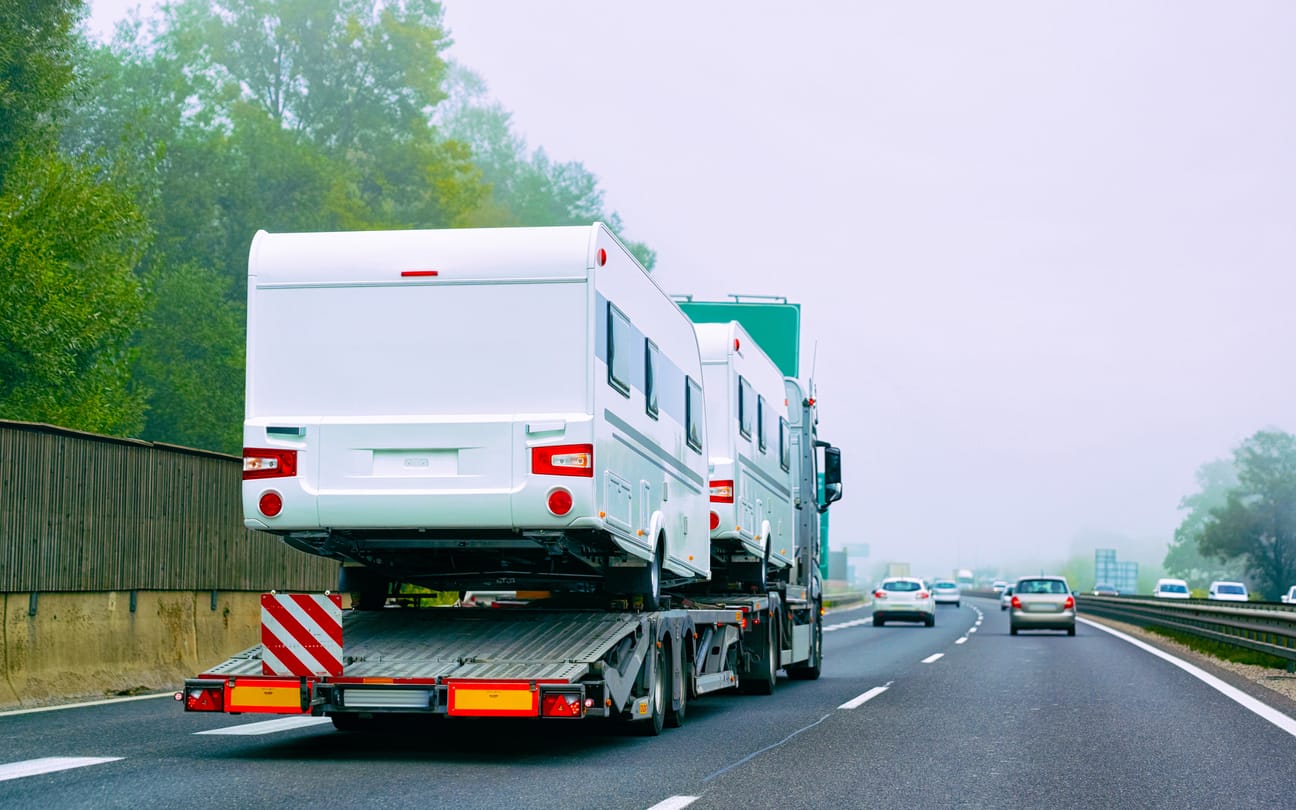
You’ve done your research, selected a shipping company, and prepped your RV for the big move. Now it’s time to load it up and hit the road. But before you rev up your engine, here are some things to keep in mind:
- Loading Procedures and Safety: Loading your RV onto the trailer or container requires some skill and precision. Make sure you follow the instructions provided by the shipping company and use proper equipment, such as ramps, straps, and wheel chocks. Safety should be your top priority, so wear protective gear and have a helper assist you if needed.
- Securing and Strapping the RV: Once your RV is on board, it’s essential to secure it properly to prevent any damage or shifting during transit. Double-check that all doors, windows, and hatches are closed and locked, and then use straps, chains, or tie-downs to anchor the RV to the trailer or container. Don’t forget to protect any protruding parts, such as antennas or mirrors, with padding or covers.
- Tracking and Monitoring the Shipping: Some carrier companies offer online tracking services that allow you to monitor the progress of your RV in real-time. Take advantage of this feature to stay informed about the location, status, and estimated delivery time of your vehicle. If the carrier does not offer real time tracking, you can contact the shipping company if you have any questions or concerns.
- Communication with the Shipping Company: Remember to keep in touch with the shipping company throughout the process. Notify them of any changes in your plans or address, and provide them with any necessary documents or information. If there are any issues or delays, stay calm and professional and work with the company to find a solution.
- Inspection and Documentation: First and foremost, inspect your RV thoroughly for any damage that may have occurred during shipping. Take photos and document any issues so you can file a claim if necessary.
- Payment and Claims: If everything is in order, pay the shipping company and any outstanding fees. If there are any damages or issues, file a claim with the shipping company immediately.
- Repairs and Maintenance: Depending on the extent of any damage, repairs may be necessary. Address any issues as soon as possible to keep your RV in good condition.
- Tips for Long-term Storage: Finally, if you plan on storing your RV for an extended period, make sure it’s properly winterized, and store it in a dry, secure location to prevent damage and ensure a smooth next adventure.
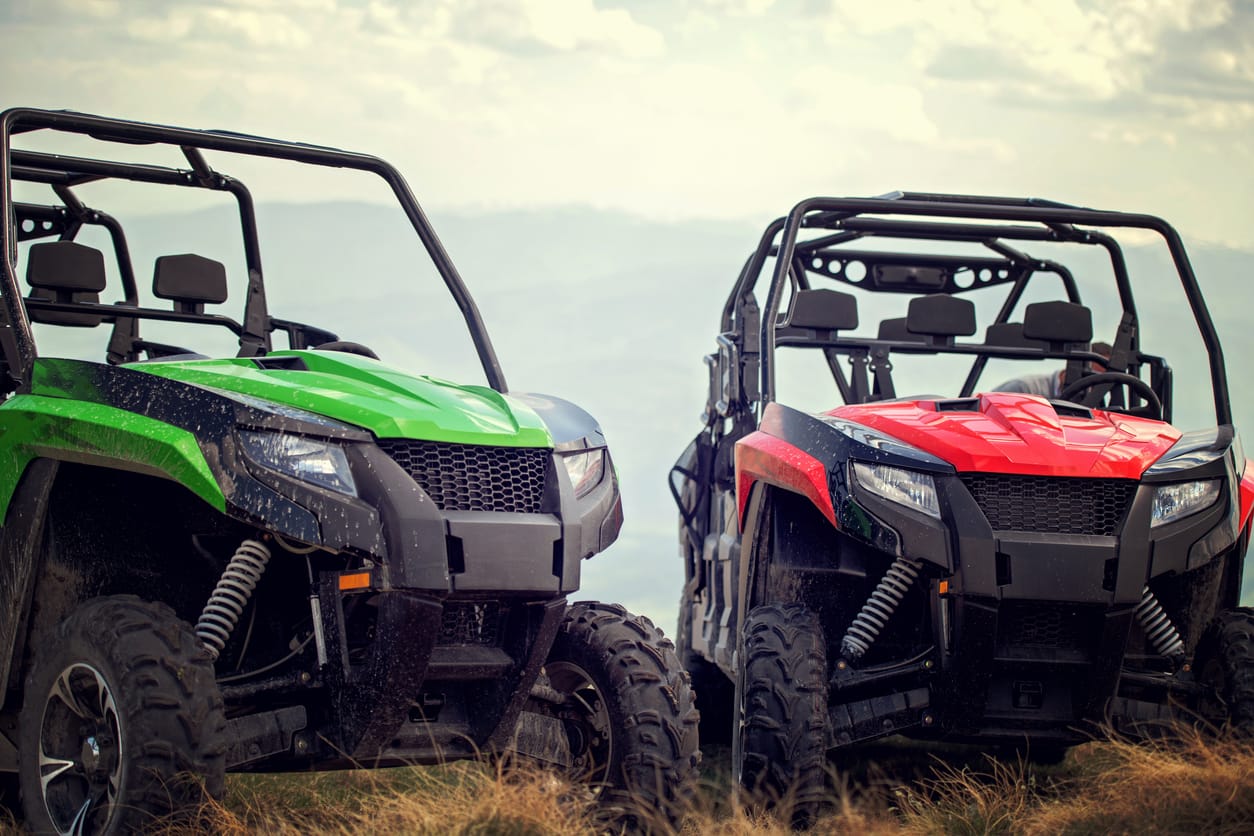
- Competitive Pricing: Get affordable and transparent pricing for shipping your ATV or UTV with SAC.
- Experienced Team: Benefit from the expertise of a team with over 10 years of experience in vehicle shipping.
- Door-to-Door Shipping: Enjoy hassle-free door-to-door shipping services for your ATV or UTV.
- Variety of Shipping Options: Choose from a range of shipping options, including open and enclosed trailers, flatbed and towable shipping, container shipping, and air freight shipping.
- Secure and Timely Delivery: Get your ATV or UTV shipped securely and on time with Ship A Car’s reliable shipping services.
- Comprehensive Insurance Coverage: Benefit from comprehensive insurance coverage for your ATV or UTV during shipping.
- Customer Support: Enjoy excellent customer support throughout the shipping process, with a dedicated team available to answer your queries and concerns.
- Get a quote: Visit the www.shipacarinc.com and fill out the quote form with your shipping details, including pickup and dropoff locations, vehicle information, and desired shipping dates.
- Book your shipment: Once you’ve received your quote and decided to move forward, you can book your shipment and choose the best shipping option for your needs.
- Prepare your ATV/UTV for shipping: This includes cleaning and removing any personal belongings, securing any loose parts, and documenting any existing damage.
- Drop off your vehicle: Bring your ATV/UTV to the designated drop-off location, or arrange for pickup if that option is available.
- Track your shipment: You can monitor your shipment’s progress in real-time using the tracking information provided by ShipaCar, Inc.
- Receive your vehicle: Once your ATV/UTV has arrived at its destination, inspect it for any damage and complete the necessary paperwork.
- Enjoy your ride: Now that your ATV/UTV has been safely shipped, you can get back to enjoying your off-road adventures!
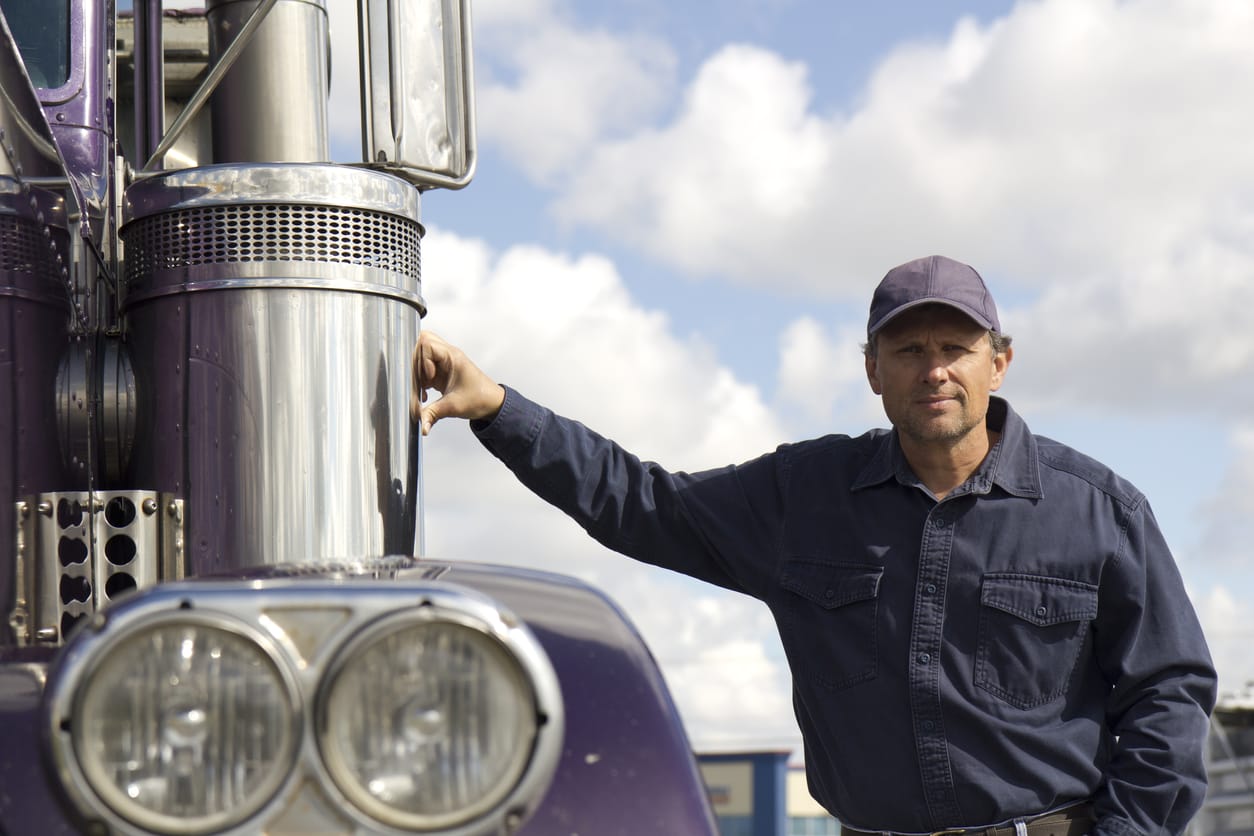
Choosing the best shipping company for your RV requires some research. Look for a reputable and experienced company with positive reviews, proper licensing and insurance, and competitive pricing. Get multiple quotes and compare them before making a decision.
Yes, it is possible to ship your RV overseas, but it requires additional planning and preparation. You will need to research international shipping regulations and find a company that specializes in overseas RV shipping.
The shipping time for an RV can vary depending on the distance and mode of transportation. Shipping within the same country can take anywhere from a few days to a couple of weeks, while overseas shipping can take several weeks or even months.
The cost of shipping an RV depends on several factors, including the distance, size and weight of the RV, mode of transportation, and shipping company. Get quotes from multiple companies to compare prices and find the best deal.
To prepare your RV for shipping, clean it thoroughly, remove all personal belongings and accessories, secure all loose items, and disconnect any propane tanks. Also, make sure to inspect and document any existing damages.
You will need to provide the shipping company with a copy of your RV registration, proof of insurance, and any other relevant documents. The company may also require a bill of lading, which is a receipt of the goods being shipped.
If your RV gets damaged during shipping, take photos of the damage and file a claim with the shipping company. Make sure to have proper insurance coverage beforehand to protect your RV during shipping.

Well, well, well, we’ve covered a lot of ground, haven’t we? Let’s do a quick recap of what we’ve learned so far. First, we defined what recreational vehicles (RVs) are and why shipping them safely and securely is so important. Then, we explored the different types of RVs, including their features and accessories.
Next up, we discussed the important factors to consider before shipping your RV, as well as the various types of shipping services available. We also talked about how to choose the right shipping company and how to prepare your RV for shipping.
Now, it’s time to receive your shipped RV, inspect and document it, and take care of any necessary repairs and maintenance. And, of course, we answered some of the most frequently asked questions about RV shipping.
Finally, shipping your RV can be a complex process, but with the right information and preparation, you can ensure a smooth and successful shipment. We highly recommend doing your research, choosing a reputable shipping company like Ship A Car Inc., and following our tips for preparing and receiving your RV. Happy travels!
